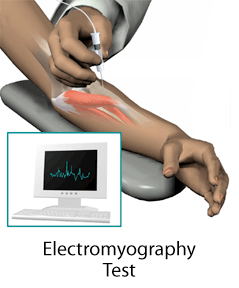Services




Spinal Cord Stimulation
Dr. González
Dr. Brusovanik
Spinal Cord Stimulation (SCS) is a procedure that uses an electrical current to treat chronic pain. A small pulse generator, implanted in the back, sends electrical pulses to the spinal cord. These pulses interfere with the nerve impulses that make you feel pain. Implanting the stimulator is typically done using a local anesthetic and a sedative.
At Aventura Spine we are able to place the device, teach the patient how to use and understand the device, and follow-up on the stimulation treatment.

Epidural Steroid Injection
Dr. González
Epidural steroid injection (ESI) is a technique for relieving pain from spinal stenosis and spinal disc herniation. Using a needle, relatively small amounts of corticosteroids together with a local anesthetic are injected into the epidural space around the spinal cord and spinal nerves.
The anti-inflammatory effect of the corticosteroid is responsible for providing pain relief when radiculopathy exists.
We use a state of the art C-Arm in order to provide image guidance for pinpoint accuracy.

Facet Joint Treatment
Dr. Gonzalez
Lower back pain is a musculoskeletal disorder affecting 40% of people worldwide at some point in their lives.
Lower back pain (often abbreviated as LBP) may be classified by duration as acute (generally pain lasting less than six weeks), sub-chronic (six to 12 weeks), or chronic (more than 12 weeks).
The condition may be further classified by the underlying cause as either mechanical, non-mechanical, or referred pain. For most episodes of LBP a specific underlying cause is never identified or even sought, and the pain is attributed generally to mechanical problems such as muscle strain or joint sprain.
The management of LBP typically includes the use of a multi-disciplinary approach to resolve. The solutions may include physical therapy, acupuncture, surgical intervention, medication or other novel treatment options.
Symptoms of LBP can be immediately removed and neutralized and then treated to remove for ever.

Enzyme Nutrition & Physical Rehabilitation
Dr. Cooper
Enzyme replacement therapy (ERT) is a medical treatment replacing an enzyme in patients in whom that particular enzyme is deficient or absent.
Usually this is done by giving the patient an intravenous (IV) infusion containing the enzyme. Enzyme replacement therapy is currently available for some lysosomal diseases: Gaucher disease, Fabry disease, MPS I, [MPS II], MPS VI and Glycogen storage disease type II.
Enzyme replacement therapy does not affect the underlying genetic defect, but increases the concentration of enzyme in which the patient is deficient.
In Pompe disease the ERT replaces the deficient Lysosomal enzyme acid alpha-glucosidase (GAA)

Nerve Conduction Studies
Electromyography
(NCV/EMG)
Dr. Levy

Intrathecal Drug Delivery
Dr. González
Electromyography (EMG) is a diagnostic procedure to assess the health of muscles and the nerve cells that control them called motor neurons.
Motor neurons transmit electrical signals that cause muscles to contract.
An EMG translates signals into graphs or numerical values by using tiny devices called electrodes to transmit or detect electrical signals. During a needle EMG, a needle electrode inserted directly into a muscle records the electrical activity in that muscle. A nerve conduction study, uses electrodes taped to the skin (surface electrodes) to measure the speed and strength of signals traveling between two or more points. EMG results can reveal nerve dysfunction, muscle dysfunction or problems with nerve-to-muscle signal transmission.
Intrathecal drug delivery, also known as the "pain pump," uses a small pump to deliver pain medication directly to your spinal cord. The pump is surgically placed under the abdominal skin and delivers pain medication through a catheter to the area around your spinal cord.
Because the pain medication is delivered directly to your spinal cord, it can be more effective than taking oral pain medications, which must travel through your system before reaching your spine. The system can also control your pain with much smaller doses, which may reduce side effects.
Intrathecal drug delivery is used to treat pain from a variety of conditions, such as chronic back and neck pain, sciatica, chronic abdominal pain, failed back and neck surgery, cancer and reflex sympathetic dystrophy or complex regional pain syndrome.
Procedures Gallery

Various Frames of a Epihematoma








